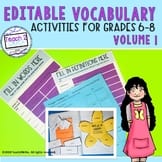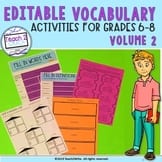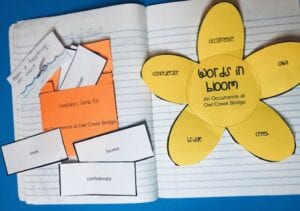Keeping the attention of 30 plus children for every class period is a challenge, but here are 5 ways to engage students in your English classroom. Lots of learning strategies exist, but I wanted you to be able to implement these as soon as possible.
1. Provide background knowledge through historical videos to engage students in your English classroom.
Because you are on this site, you are most likely looking for ways to help students to improve their writing skills. Of course, we do this by reading excellent texts. Yet, sometimes students become bored if they don’t have any historical frame of reference.
One way to engage bored kids is to show them historical video clips. For example, to capture their interest in Dr. King’s March on Washington speech “I have a dream…” from 1963, I showed students videos about Jim Crow laws. Students needed to understand the concept of “separate, but equal” laws used in the southern United States.
Another example is when I taught about the Holocaust. While we read Night, I showed students a video of Oprah Winfrey going to Auschwitz with Elie Wiesel. Many of them had never seen anything like this before. The videos not only introduced the concept, students also saw the author and how Auschwitz affected him emotionally.

2. Use Interactive Notebooks as a way to capture your students’ attention in your English classroom.
I LOVE interactive notebooks, especially for language arts. I actually have two of them – one for reading and the other is a writing journal. Always, I use regular composition books of 100 pages each. Sometimes students write on the actual pages, but I also have foldables and other handouts that my students use for learning. To secure these inside the notebook, I have found that tape is the easiest to manage. (I have 9-10 tape dispensers that I bought from Dollar Tree.) I order the tape at the beginning of the school year.
In fact, I love interactive notebooks so much that I actually started a store on TeachersPayTeachers to share the activities I use with my students! What’s so great about interactive notebooks? I could probably do a whole blog post on that; however, I have ONE major statement about them – No papers on the bottoms of book bags!
Students are able to see their growth, use their previous activities as examples, and have their notes all in one convenient place that won’t fall out of their notebooks. Everything is in date order, so they have a chronological portfolio of their daily learning and accomplishments. This can be a very empowering tool for students to track their growth in understanding the concepts within the standards.
For example, when we studied Edgar Allan Poe’s “The Tell-Tale Heart,” my students used their notes and graphic organizers to think and write about Poe’s gruesome tale of madness.
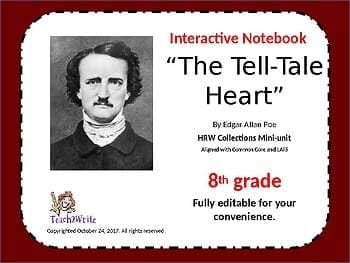
3. Engage students by letting them draw their understandings to engage them in your English class.
Another way to engage students in your English classroom is to give them paper and some colored pencils or markers and let them draw what they’ve learned.
Since my principals love seeing student work on the walls, I try to find ways that I can review learning or check for understanding through having students draw. It’s a win-win.
For example, with the Dr. King unit, my students learned about the Children’s March in Birmingham, Alabama in 1963. Afterward, I had my students draw something that deeply affected them after watching the video. This activity is in my Dr. King unit, too. With this, they had to write a caption.
Here are some examples of their artwork:



4. Another Way to Engage Students is through Group Discussions.
Every period, I try to build in partner or group discussion during writing workshop, if I can. Students being able to talk about the lesson, something they have read, or a video they have seen is very powerful. Give students a question to think about that requires some deep thought and some evidence. Then use one of the 5 tricks for breaking writer’s block to get them writing down those thoughts.
Sometimes, I give them a sheet of colored paper or colored sticky notes, and then I have them answer the question on the colored sheet of paper as a group. I hang these papers up around the classroom. Then, students use smaller sticky notes to write comments on other group’s answers to the question.
This also gives students the opportunity to get up and move around the room in a purposeful way!
5. Break your lesson and activities up into stations.
Students love movement, so breaking up your lesson with activities into chunks will improve their engagement. What’s great about this is students have to rely more on each other. They must read the directions rather than waiting for you to tell them the next step.
Usually, I give students a checklist before we go into stations so they know what they need to finish by the time they have rotated through the stations. I’ve used this for revisions, too, having students revise a different part of an essay or story for each station.
I hope you are able to WAKE UP your bored students with these strategies for engaging them into wanting to read and write. Students are naturally curious and want to learn about the world, so give them that opportunity.
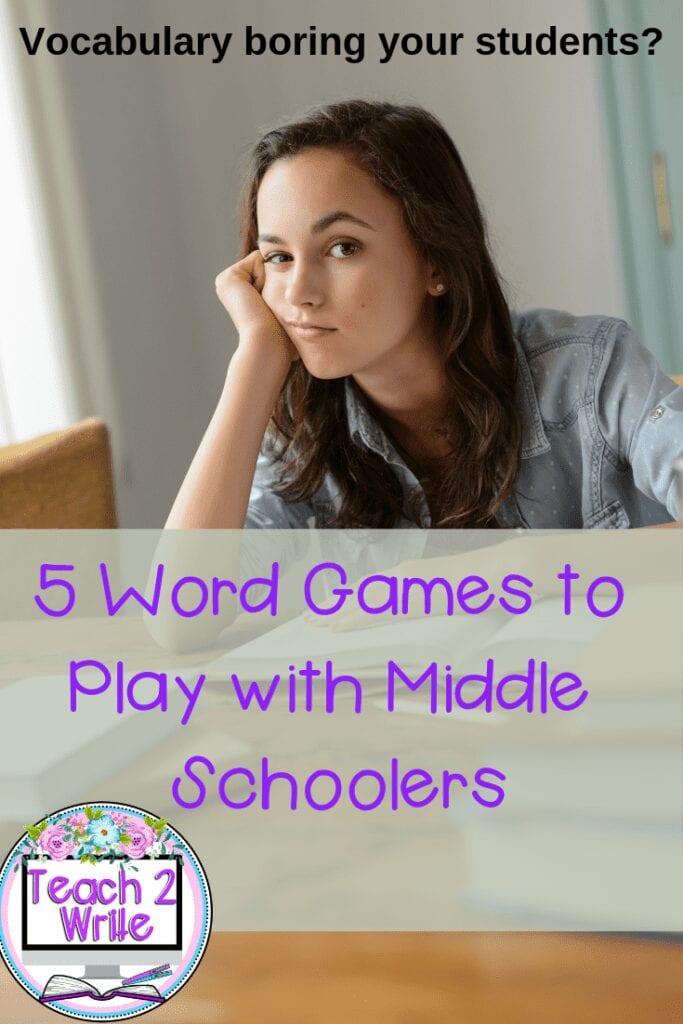
For a way to engage them with learning new words, click here for my blog post on Word Games to Play with Middle Schoolers.
Here are editable vocabulary resources you can use to engage your students:


